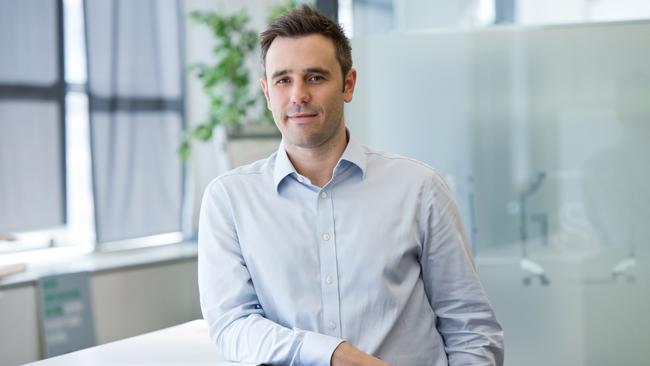Doctors, lawyers, engineers fight it out for best investment returns
Sure, finance professionals are the most aggressive investors but turns out they don’t make the best returns. That award goes to a rather more conservative professional.

Australians love investing but which profession makes the best investors? Finance is the obvious answer here, but new research suggests another, entirely different career could actually churn out better investors – and a lot of the outperformance can be put down to behaviour.
According to the Australian Taxation Office, the top paid professional fields in Australia are medicine, finance, law, engineering and IT.
Digging down into its user base, online investment adviser and fund manager Stockspot crunched some numbers to find out how the highest earners fared in the markets.
Among Stockspot users, finance heads come out on top as the most aggressive, with more than 80 per cent of portfolios invested in growth assets.
As a strategy, it fails to deliver the highest returns, with this cohort taking out second place for the best performance.
Instead, medical professionals scored first place over the long term, despite holding much more conservative portfolios.
Average annual returns for those in medicine came in at 7.8 per cent, according to Stockspot. This compares with 7.5 per cent for those in finance, 7.3 per cent apiece for investors working in legal or engineering fields, and 7 per cent for IT workers.
While finance workers are the most aggressive, with more than 80 per cent invested in growth portfolios, IT are next with 76 per cent allocated to growth.
Engineers aren’t far behind with 72 per cent in growth assets, followed by doctors, at 66 per cent, and lawyers at 65 per cent.
Set and forget
Doctors taking out the top spot on the returns front may, in part, be because medical professionals tend to take a more set-and-forget approach, Stockspot chief executive Chris Brycki said. This compares with those working in other sectors – and likely watching the markets regularly – who dip in and out in a bid to take advantage of market moves.
“Doctors tend to have the least behavioural gap in their investing approach. They might be just the most disciplined in investing regularly and not focusing on the ups and downs of markets,” Brycki says.
“Others, (such as those in) engineering and IT, are more interested and involved. They’re watching markets, and they’re trying to time their entry and exit points a bit more, and that’s actually pulling their returns down a bit.”

Brycki, who founded Stockspot in 2013, advises against trying to time the market.
“We see with clients that timing the market generally doesn’t end well. We saw it a lot during the Covid crisis (in March 2020).
“A lot of clients were sitting on the sideline and had money to invest. When the market had fallen 20 or 30 per cent and we were calling them saying, ‘We said we’d call you if the market had a big dip, and the dip has happened’, the answer almost inevitably was ‘It might fall further’.”
Mind the Gap
Stockspot’s findings coincide with fresh research from Morningstar, again on the pitfalls of trying to time the market.
Morningstar’s latest Mind the Gap study, focused on US funds, found investors failed to capture around 15 per cent of their funds’ total returns over the 10 years to the end of 2023.
The shortfall was due to the timing and magnitude of their purchases and sales.
As Morningstar analyst Jeffrey Ptak puts it, a fund’s total return assumes an initial lump-sum purchase that’s held until the end.
But that’s not how many of us invest. Instead, it’s common to buy into a fund, add to the holding, then sell a bit, then maybe buy some more.
“Thus, your return won’t be the same as the buy-and-hold return.
It’ll be whatever your average dollar earned, given the timing and amount of those buys and sells,” Ptak writes.
“If you buy high and sell low, your return will lag the buy-and-hold return. That’s why your return fell short.”
The average investor return lagged the average total return in all 10 of the years included in Morningstar’s study, underscoring the persistence of timing costs.
Investors struggled most in navigating the turbulence of 2020, topping up investments in late 2019 and early 2020, before withdrawing nearly half a trillion dollars as markets fell, meaning they missed out on some of the subsequent rally, according to the research house.
“Drilling down, we found allocation funds, which diversify their assets widely across asset classes, boasted the narrowest gap (-0.4 per cent gap per year). This is consistent with our prior findings, suggesting investors have had more success using simple funds that automate routine tasks like rebalancing,” Morningstar said.
“Conversely, sector equity funds had the widest gap (negative 2.6 per cent gap annually), with at least some of that gap owing to the funds’ higher volatility, which our research suggests can trip up investors.”
Brycki said the findings were encouraging for those diversified across different assets. Asset allocation funds seeing the smallest behavioural gap
was likely due to their lower volatility and the understanding among investors that timing the market is notoriously difficult, he said.






To join the conversation, please log in. Don't have an account? Register
Join the conversation, you are commenting as Logout